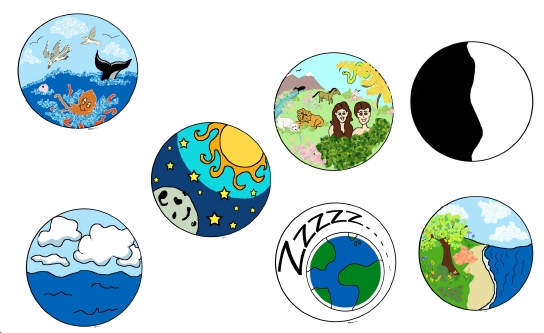Doesn’t Genesis 2 present a different creation order than Genesis 1?

Genesis 2 does not present a creation account at all but presupposes the completion of God’s work of creation as set forth in chapter 1. The first three verses of Genesis 2 simply carry the narrative of chapter 1 to its final and logical conclusion, using the same vocabulary and style as employed in the previous chapter. It sets froth the completion of the whole primal work of creation and the special sanctity conferred on the seventh day as a symbol and memorial of God’s creative work. Verse 4 then sums up the whole sequence that has just been surveyed by saying, “These are the generations of heaven and earth when they were created, in the day that Yahweh God made heaven and earth.”
Having finished the overall survey of the subject, the author then develops in detail one important feature that has already been mentioned: the creation of man. Kenneth Kitchen says,
Genesis 1 mentions the creation of man as the last of a series, and without any details, whereas in Genesis 2 man is the center of interest and more specific details are given about him and his setting. Failure to recognize the complementary nature of the subject-distinction between a skeleton outline of all creation on the one hand, and the concentration in detail on man and his immediate environment on the other, borders on obscurantism” (Ancient Orient, p. 117).
Kitchen then draws on the analogy of Egyptian inscriptions like the Karnak Poetical Stela of Thutmose III, the Gebel Barkal Stela, and those royal inscriptions from Urartu that ascribe the defeat of the nation’s foes to their patron god, Haldi, and then repeat the same victories in detail as achieved by the reigning king of Urartu. Kitchen then adds,
What is absurd when applied to monumental Near Eastern texts that had no prehistory of hands and redactors should not be imposed on Genesis 1 and 2, as is done by uncritical perpetuation of a nineteenth-century systematization of speculations by eighteenth-century dilettantes lacking, as they did, all knowledge of the forms and usages of Ancient Oriental literature” (ibid.).
As we examine the remainder of Genesis 2, we find that it concerns itself with a description of the ideal setting that God prepared for Adam and Eve to begin their life in, walking in loving fellowship with Him as responsive and obedient children. Verses 5–6 describe the original condition of the “earth,” or “land,” in the general region of the Garden of Eden before it had sprouted verdure under the special watering system the Lord used for its development. Verse 7 introduces Adam as a newly fashioned occupant for whom Eden was prepared. Verse 8 records how he was placed there to observe and enjoy the beauty and richness of his surroundings. Gen. 2:9–14 describe the various kinds of trees and the lush vegetation sustained by the abundant waters of the rivers that flowed out of Eden to the lower regions beyond its borders. Verse 15 indicates the absorbing activity that Adam had assigned to him as keeper and warden of this great natural preserve.
From the survey of the first fifteen verses of chapter 2, it becomes quite apparent that this was never intended to be a general creation narrative. Search all the cosmogonies of the ancient civilizations of the Near East, and you will never find among them a single creation account that omits all mention of the formation of sun, moon, and stars or ocean or seas—non of which are referred to in Genesis 2. It is therefore quite obvious that Genesis 1 is the only creation account to be found in the Hebrew Scripture and that it is already presupposed as the background of Genesis 2. Even the animals are not referred to until Adam is assigned the task of examining them carefully, one by one, in order to decide on an appropriate name for each species or bird and beast that was brought before him (Gen. 2:18–20). But before this phase of Adam’s experience begins, he is brought into covenant relationship with God, who grants him permission to eat of the fruit of every tree in the garden except one: the tree of the knowledge of good and evil (Gen. 2:16–17). Verse 18 then shows how Yahweh proceeded to fill Adam’s foreseen need of companionship—first by the fellowship with the animals and birds (Gen. 2:19–20), then, after that proves to be unsatisfying, by the companionship of a wife, who is fashioned from the bone that was closest to Adam’s heart (Gen. 2:21–22). The chapter closes with a vivid portrayal of Adam’s joyous acceptance of his new helpmate and his unreserved commitment to her in love.
The structure of Genesis 2 stands in clear contrast to every creation account known to comparative literature. It was never intended to be a creation account at all, except insofar as it related the circumstances of man’s creation as a child of God, fashioned in His image, infused with His breath of life, and brought into an intimate personal relationship with the Lord Himself. Quite clearly, then, chapter 2 is built on the foundation of chapter 1 and represents no different tradition than the first chapter or discrepant account of the order of creation.
[1]
[1]Archer, G. L. (1982). New International Encyclopedia of Bible Difficulties. Originally published: Encyclopedia of Bible difficulties. 1982. Zondervan’s Understand the Bible Reference Series (68). Grand Rapids, MI: Zondervan Publishing House.

